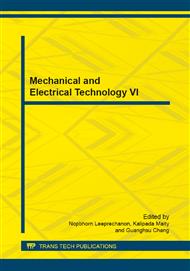p.105
p.110
p.115
p.121
p.125
p.130
p.135
p.145
p.150
Heat Transfer Enhancement due to V-Shaped Perforated Blocks in a Solar Air Heater Duct
Abstract:
An experimental study of enhancement of heat transfer due to V-shaped perforated blockages attached to the heated surface has been presented in this paper. The duct equipped with perforated V-blocks had an aspect ratio (W/H) of 12, relative blockage height ratio (e/H) of 0.8, angle of attack (α) of 60° and open area ratio (β) of 20%, while relative pitch ratio (P/e) was varied from 4 to 12. The values of Nusselt number and friction factor of the duct with blockages were compared with values of Nusselt number and friction factor of the smooth duct operating under similar experimental conditions. It was found that there was a significant effect on the Nusselt number ratio and friction factor ratio when the pitch ratio was changed and there was exist an optimum value of pitch ratio. Thermal hydraulic performance was found to be maximum corresponding to relative pitch value of 8.
Info:
Periodical:
Pages:
125-129
Citation:
Online since:
August 2014
Authors:
Keywords:
Price:
Сopyright:
© 2014 Trans Tech Publications Ltd. All Rights Reserved
Share:
Citation:


